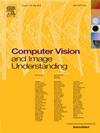Learning to mask and permute visual tokens for Vision Transformer pre-training
IF 4.3
3区 计算机科学
Q2 COMPUTER SCIENCE, ARTIFICIAL INTELLIGENCE
引用次数: 0
Abstract
The use of self-supervised pre-training has emerged as a promising approach to enhance the performance of many different visual tasks. In this context, recent approaches have employed the Masked Image Modeling paradigm, which pre-trains a backbone by reconstructing visual tokens associated with randomly masked image patches. This masking approach, however, introduces noise into the input data during pre-training, leading to discrepancies that can impair performance during the fine-tuning phase. Furthermore, input masking neglects the dependencies between corrupted patches, increasing the inconsistencies observed in downstream fine-tuning tasks. To overcome these issues, we propose a new self-supervised pre-training approach, named Masked and Permuted Vision Transformer (MaPeT), that employs autoregressive and permuted predictions to capture intra-patch dependencies. In addition, MaPeT employs auxiliary positional information to reduce the disparity between the pre-training and fine-tuning phases. In our experiments, we employ a fair setting to ensure reliable and meaningful comparisons and conduct investigations on multiple visual tokenizers, including our proposed -CLIP which directly employs discretized CLIP features. Our results demonstrate that MaPeT achieves competitive performance on ImageNet, compared to baselines and competitors under the same model setting. We release an implementation of our code and models at https://github.com/aimagelab/MaPeT.
求助全文
约1分钟内获得全文
求助全文
来源期刊

Computer Vision and Image Understanding
工程技术-工程:电子与电气
CiteScore
7.80
自引率
4.40%
发文量
112
审稿时长
79 days
期刊介绍:
The central focus of this journal is the computer analysis of pictorial information. Computer Vision and Image Understanding publishes papers covering all aspects of image analysis from the low-level, iconic processes of early vision to the high-level, symbolic processes of recognition and interpretation. A wide range of topics in the image understanding area is covered, including papers offering insights that differ from predominant views.
Research Areas Include:
• Theory
• Early vision
• Data structures and representations
• Shape
• Range
• Motion
• Matching and recognition
• Architecture and languages
• Vision systems
 求助内容:
求助内容: 应助结果提醒方式:
应助结果提醒方式:


